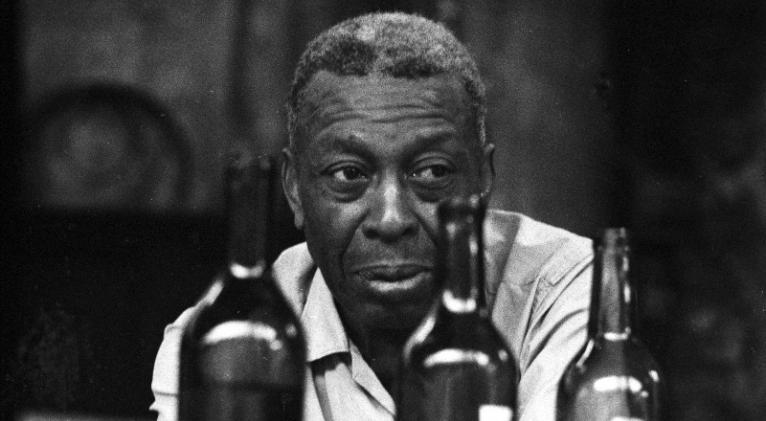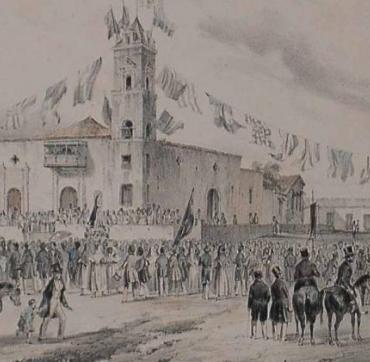Chori, the Cuban Showman, a Legend (+ Video)
especiales

For a man like El Chori who knew the depths where love is usually lost if a loving heart cannot rescue it, music was his greatest refuge. Angel lost on earth, recreating the sounds of those bottles of a thousand colors, hit pans or pieces of useless chassis or perhaps, and why not, poor devil hiding his sadness in the resonances of a kettledrum that never seemed to grow silent; hence, that black man with a swaying figure lived the intense atmosphere of Marianao Beach with his fried food stands, bars and clubs on saltpeter nights.
The press of the time tried to reconstruct the life of that man from Santiago de Cuba named Silvano Shueg born in 1900. Several journalists wrote chronicles about him. Notable photographers like Chinolope and Ernesto Fernández, among others, captured him in images of great documentary value. As for Drew Pearson in The New York Times, he expressed that whoever visited Havana could not miss seeing Chori and his show; of course, Pearson, more than describing the authenticity of the artist, highlighted him as an extravagance of our musical panorama.
The truth is that El Chori met many people and many people wanted to meet him, but no one could really penetrate his soul, in those nostalgic eyes, in those thick lips that made mocking signs to the world.
He worked at El Ranchito with Sabino Peñalver, double bass player of Félix Chappottín's Ensemble; later, the cabarets Pensylvania, El Niche, El Paraíso, la Taberna de Pedro, Mi bohío... he worked in all of them until he anchored like an old lethargic ship in Los Tres Hermanos. Curious parishioners would come there to see his show, as unique as he was.
His popular wisdom was such that he became a master of advertising art. He got to be known as the King of Graffiti, because with just a piece of chalk he engraved his name on walls and doors of the city and if he could have painted it in the sea also, without fear that the waves would erase it. That was how he was as a dreamer and a poet.
All celebrities passing through Havana came to see him. And wasn't he also a celebrity? He was applauded by María Félix, Agustín Lara, Toña la Negra, Ava Gardner, Silvana Mangano, the poet Langston Hughes, the writers Ernest Hemingway and Tenesse Williams, the fabulous Josephine Baker, the reciter Berta Singerman... During his stay in Havana, Federico García Lorca succumbed to his charm. Moved by Chori's performance, American actor Spencer Tracy called him a genius. Musicians George Gershwin and Tito Puente were fascinated by his performance. The notorious Errol Flynn made him appear in The Bribery Gang, although celluloid had already picked up his image in A Stranger on the Staircase, a film by Argentine director Tulio Demiceli.
The biggest surprise was for Marlon Brando when he visited Havana. He got into the cabarets of Marianao, mainly to meet the Chori. The American was not only surprised by his executions, but also by his "subtle comedy". An anecdote assures that the actor, a lover of congas, played them one on one with Chori and there are even those who affirm that the rebellious Hollywood artist did not hesitate to invite him to the Mecca of Cinema, a proposition that after thinking twice the percussionist Cuban refused. And of course Chori had imitators here on his homeland and abroad. One of his admirers, Cab Calloway, soon amplified the pailero's cry in his presentations.
Marcelino Teherán, who lived in the United States, where he was a drummer for the famous couple of Rumba players Estela and René, when he returned to Havana, he worked at the El Niche club; there, he not only played for a dancer known as Yimba, but also waged fraternal wars with Chori, to win the crown of King of the Kettledrum. He could never win it.
Chori also had a special gift for composing rumbas, the tastiest were born in the heat of his performances. He only recorded the sounds Hallaca de maiz, and La choricera.
He came to perform at the Sans Souci cabaret with Miguelito Valdés, Mister Babalú. The Mexican comedian Alfonso Arau had him as a special guest on his show, the Arau Show, on Cuban TV.
Director Santiago Álvarez dedicated one of the first editions of the ICAIC Newscast to him. As a member of the group Los Tutankamen, Chori is present in the short film La herrería de Sirique, by Héctor Veitía, and appears in the controversial documentary PM, by Orlando Jiménez and Sabá Cabrera, that rescues his brilliant performances. There he is on screen, the man who, in his own way, forged his own aesthetic.
Due to a law passed in 1963, the small cabarets, where the famous showman from Santiago worked, disappeared. Hard blow for the artist... What to do? Where to go?... For a time, he played with Los Tutankamen at Peña de Sirique. Later, he languished in his miserable little room on a vacant lot at 723 Egido Street. What he longed for most was the music that made him internationally famous. Alone and abandoned, Chori felt relief when death came to him one day in 1974. At the gates of heaven, he looked at God and tried to smile, but his bitterness rose to his thick lips in a painful and definitive grimace.
Translated by Amilkal Labañino / CubaSí Translation Staff














Add new comment